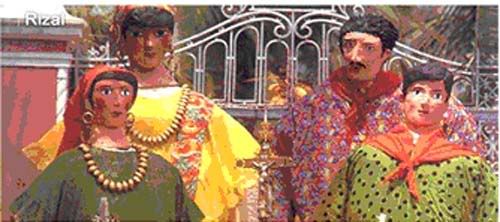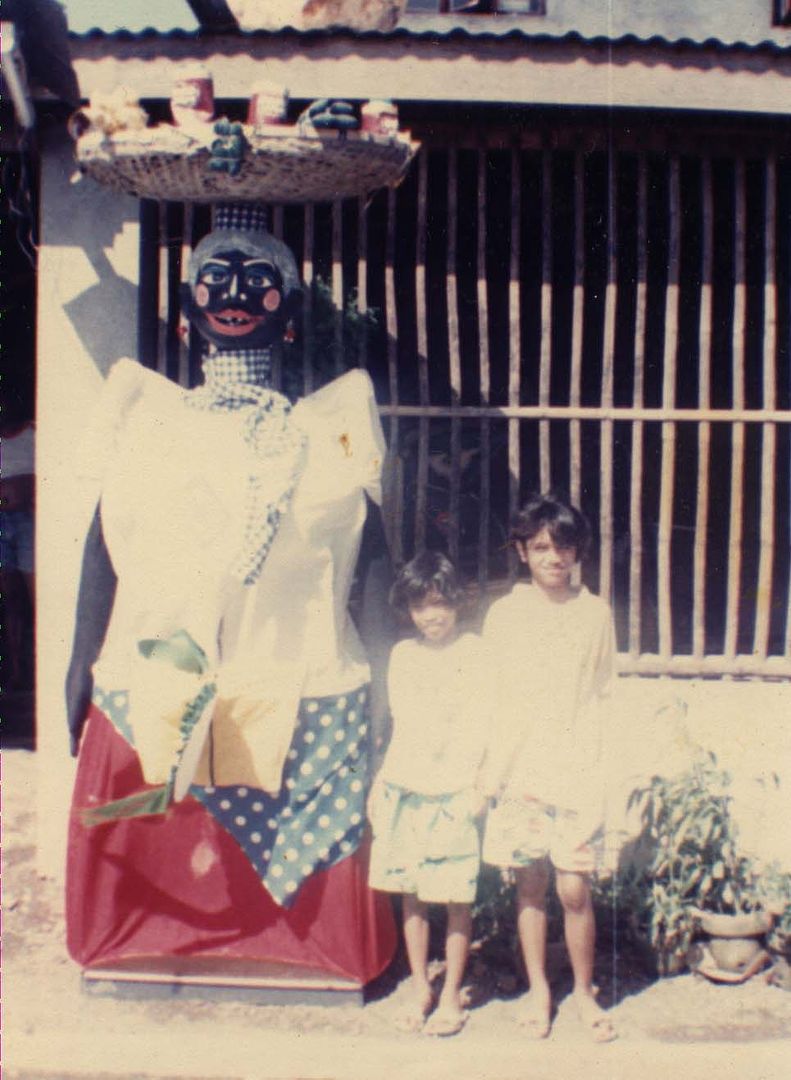
My hometown, where i grew up. The "Higante Festival" which held every year in honor of "St. Clement", ("Patron Saint of the Fishermen"). This event is celebrated on the 23rd of November. Higantes (Giants) are made of paper-mache. The "Higantes" are consist of the father, mother and child. Higantes are measured 10-12 feet in height and 4-5 feel in diameter. Higantes costume and its inner body are made of bamboo, rattan and thin iron bars. The heads of the higantes are made from mold clay and dried under the sun. On the event, these "Higantes" are paraded in town.

There are 2 men helping each higantes walk by controlling it from inside throughout the entire event. The heads has two holes for each man to see through, other holes are made on the higante's clothing to help the men see beneath. When i was young, me, my sister and my father go to the town to witness the event, in my entire life.. i only witnessed the festival once... found this old picture which my father took from the event... (year 1988-1989), yeah that was me....
I might come visit my hometown this year, and see this Festival.. i havent witness for a long time.... i am currently staying in Pasig, we moved a couple of years ago..
ANGONO, RIZAL
ANGONO, Art Capital of the Philippines.

Angono lies between Laguna Lake and the foot-hills of the Sierra Madre, some 30 kilometers from Manila. Angono is an ordinary town with a plaza and busy market, but nothing is ordinary about Angono. It is home to many of the country’s finest artists. Maybe it’s the rugged and hilly landscapes or sleepy fishing villages that inspired these painters.
Angono is popularly known as the ART CAPITAL OF THE PHILIPPINES. Angono was home to two National Artist of the Philippines awardees, Carlos V. Francisco for Painting (1973) and Lucio D. San Pedro for Music (1991). It is also known for the Philippines' oldest prehistoric work of art, the Angono Petroglyphs although it sits along the boundaries of Angono, Binangonan and Antipolo of the province of Rizal.
Other known artists in Angono are Vicente Reyes, Salvador Juban, Bobet Andres, Weweng Unidad, Lito Balagtas, Cesar T. Hernandez et. al. The Nemiranda Arthouse and the Blanco Museum are two of the most well known Art Museum in Angono that are habitat of art connoisseurs and tourists.
HOW DID ANGONO GET INTO ARTS? The Angono PETROGLYPHS, which was discovered in the 60s, was found to have etched drawings on the rock surface of the cave in the mountain forest of Angono. Archeologist from the National Museum confirmed that the age of the rock art drawings based on their studies of rock sedimentation was 3,000 years-old.
Angono has been known as the cradle of the arts or the fountain of talents.
Angono has achieved substantial economic progress over the years. What started out as a small fishing and farming based municipality, it has developed to modern one which boasts of many small to medium sized local business concerns. Most major banks in the country have local branches. National retail chains like popular fastfood brands, have local outlets. It has a modern telecommunication system in place, offering telephone (same area code as greater Manila), cable TV, internet service and others.
For a taste of exotic food, there is the Balaw-Balaw Restaurant, which is also an art gallery, right across the Nemiranda Art Cafe and Restaurant. The former's name was derived from the local side dish mainly made from fermented small shrimp. Besides the famous Balaw-Balaw Restaurant's cuisine, Angono is also known for its tasty fried "itik", or duck. Local Filipino snacks, or "kakanin" can also be found at the Angono Public Market.